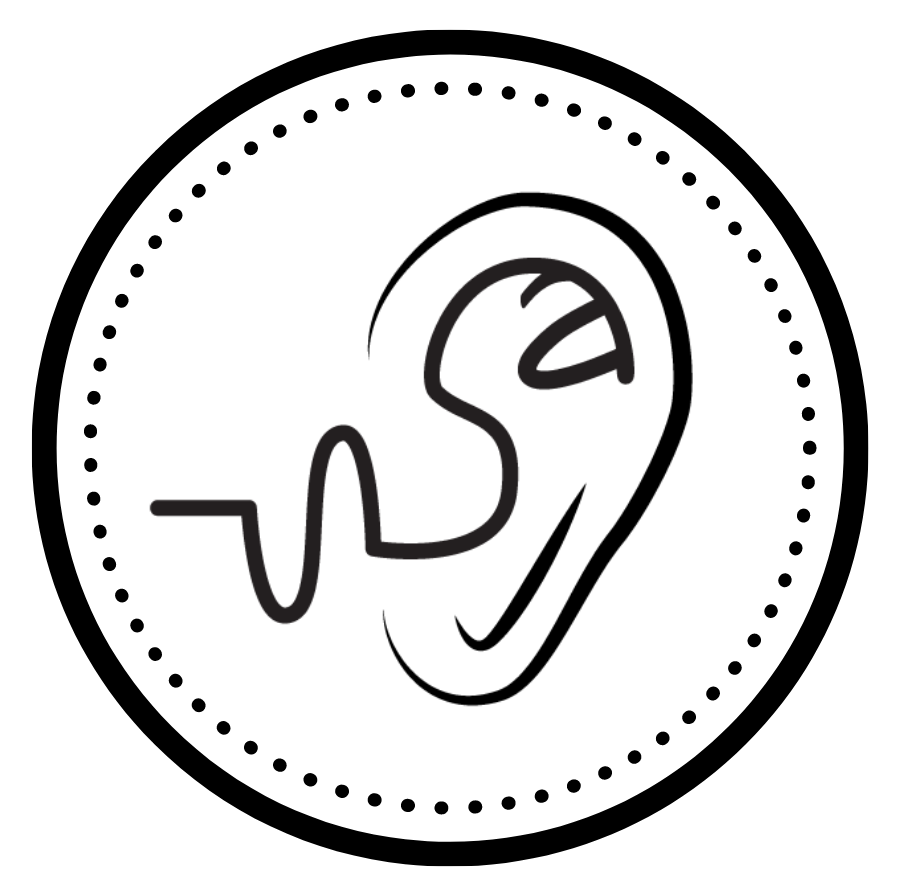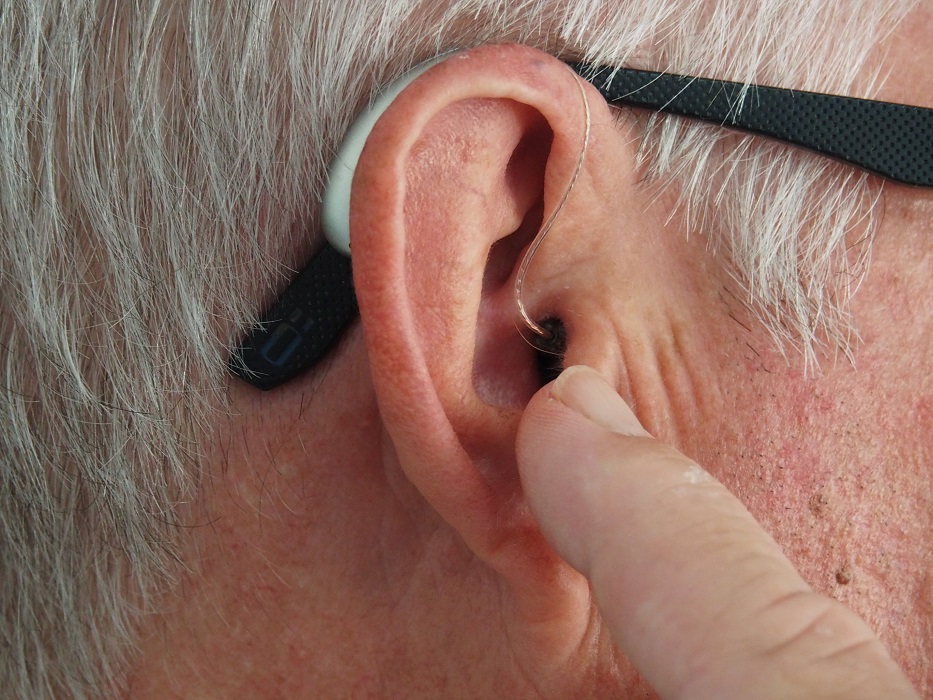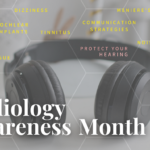This post is intended for anyone who has hearing loss in both ears and is debating between wearing one vs. two hearing aids, despite being a good hearing aid candidate for both ears.
Mammals are born with two ears, two eyes, and two nostrils. Why is it that we have evolved to have two of some features and only one of other features (e.g. mouth)? Today’s topic is going to focus on the science of listening with two ears and why wearing two hearing aids is important for individuals with hearing loss in both ears.
Science of two ears
Two ears allows us to hear sounds around us. Each ear collects sound information and sends similar, but slightly different signals to the brain. The brain combines sound information from both ears and processes it to help us navigate our world. With two ears, the brain is able to make quick calculations about where a sound is coming from and how far away it is relative to where the sound is heard. Amazing, right?
In a human fetus, the hearing organs begin to develop at 5 weeks in utero. By about 19 weeks gestation, a normal fetus will have hearing sensitivity and be able to detect sounds. Maturation of the auditory system will continue throughout gestation and even more as the baby continues to be exposed to sounds and language in early childhood. As humans age, it is expected that hearing loss is gradual and progressive affecting both ears similarly.
Single-sided deafness, one functioning ear
With that being said, it’s also possible that some people are born with one functioning ear. This is known as single-sided deafness (SSD). Research has shown that approximately 5% of school-children have some level of unilateral hearing loss.
Although single-sided deafness is not normal, some people with this diagnosis can continue to live their life without a second functioning ear. Children, especially, have adapted to getting sound input through only one ear. They may be able to develop speech and language ability as long as they have at least one normal hearing ear. The outcome depends on the person and when they lost their ability to hear in one ear. However, something people with one functioning ear cannot do is accurately determine the direction of where a sound is coming from.
Advantages of using two ears and wearing two hearing aids
Let’s get back to the original question: should you wear two hearing aids? If you have aidable hearing loss in both ears, the answer and recommendation is a resounding YES!
Why two? The benefits of hearing amplification in both ears is important for:
1. Improve sound localization ability
Sound localization is the ability to determine where a sound is coming from in space. If someone slammed the door shut in a large restaurant and you didn’t see it, can you tell where the door is located? If both of your ears heard the door shut, you would be able to know where the sound came from.
Using hearing in both ears allows for the elimination of the head shadow effect. This is known as the perception of sound difference between ears depending on where the sound signal is coming from. The head “shadow” separates the sound signal from reaching the right and left ear simultaneously, so the brain factors this in to be able to localize a sound.
2. Improve speech understanding in noise
Speech understanding in noise is improved when listening with two ears. Most social situations involve some background noise and this can make communication very difficult. Wearing two hearing aids will allow the devices to communicate with each other to better process sounds in noisy situations. Hearing aids have noise reduction and speech processing capabilities to improve the listener’s ability to communicate in noise.
I want to reiterate that listening in noise is very challenging and speech understanding ability will vary between individuals. Although speech understanding in noise can be improved by wearing two hearing aids, it does not guarantee that speech understanding will be 100% clear.
3. Decrease listening effort and reduce fatigue
Listening with two ears will decrease the effort to hear what’s going on around you. You pick up similar speech information and cues from each ear and as a result, it makes listening less stressful. As a result, fatigue from listening is less likely in quiet environments or one-on-one conversations.
4. Improve sound quality and amplification balance between ears
When was the last time you heard the clock ticking? When was the last time you heard birds chirping? When was the last time you heard your car’s turn signal blinking?
Hearing aids are programmed to provide adequate amplification according to each ear’s hearing loss. No two ears are the same. Even if the hearing loss is exactly the same (by degree and at various pitches) between ears according to the audiogram, the hearing aid settings might look a little different after measuring the amplification output in each ear. Real ear measurements is what audiologists use to fit hearing aids properly to each person.
If you are someone with slightly different hearing loss between ears, wearing hearing aids is especially important to achieve amplification balance. It would be odd to only amplify the poorer ear with one hearing aid. The brain would be confused by having such a loud signal input on the aided side and a relatively soft signal input on the unaided side. How would it feel to hear birds chirping with just one ear when you could appreciate it more if you could hear it with both ears?
Take music, for example. If you only wear one hearing aid, you would only hear the softer elements of music with one ear. If you wear two hearing aids, you would get the full spectrum of sound in both ears and thus enhance your musical appreciation overall. Processed amplification for music is not quite the same as it would be before the onset of hearing loss, but it is better than not being able to hear music at all.
Wearing two hearing aids allows your brain to re-establish a new baseline for hearing sounds through both ears. As a hearing aid listener, you will likely feel less ‘off-balance’ if both ears received the amplification they needed to help you with speech understanding.
5. Binaural summation of sound at the level of the brain
Hearing ability is better when both ears receive amplified speech signals as opposed to when one amplified ear is working alone. Research has shown that a sound is perceived to be louder when presented to both ears compared to when the same sound (and loudness) is presented to only one ear. Depending on the loudness of the signal, the improvement of binaural listening can range between 3-9 decibels (dB).
The power of loudness summation can make a difference for someone who performs well with more audibility. However, one common misconception about hearing loss is that more volume will bring absolute clarity. For mild or conductive hearing losses, yes, this may be true. For more severe hearing losses, loudness can only provide a little more clarity before it becomes a hindrance and distorts sound. Nevertheless, hearing aids provide audibility through amplification with sound processing. Your brain has to do the hard part, which is to combine and process all the incoming sounds to make sense of it all.
Reasons to not wear two hearing aids
Despite this recommendation, there are exceptions to the rule of wearing two hearing aids. For example, if only one ear has hearing loss and the other ear is hearing within normal limits. It would only make sense to wear one hearing aid in this case to restore sound balance between ears.
Another exception is in rare individuals who experience binaural interference. This is a phenomenon where speech perception is poorer when hearing with both ears than with one ear. In these cases, speech may be distorted as a result of loud amplification from both ears.
Lastly, wearing two traditional hearing aids may not be appropriate for people who perceive minimal benefit with speech understanding. This will vary depending on the type and degree of hearing loss. It may be worthwhile to explore other hearing technology (bone-anchored hearing device or cochlear implant) if candidacy criteria is met. Speak with your audiologist about what’s right for your communication needs and your hearing loss.





It was informative when you explained that hearing aids are programmed according to an ear’s hearing loss. I would imagine that there are several extensive tests that help doctors determine the extent of a person’s hearing loss. If you want to get a listening aid, you are going to have to find the appropriate doctor to work with.